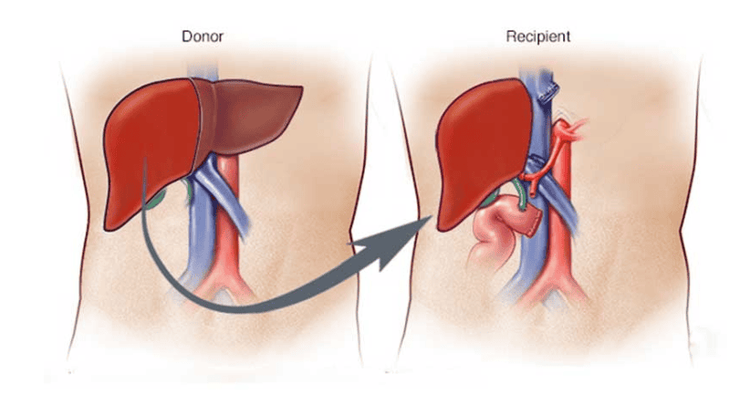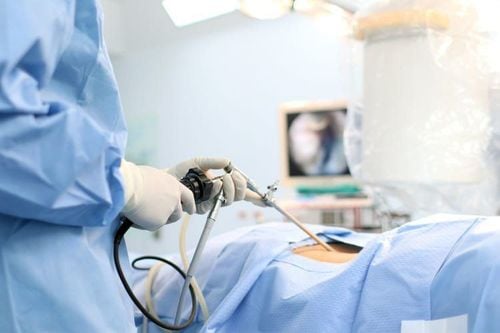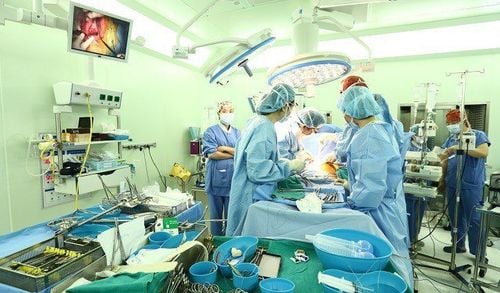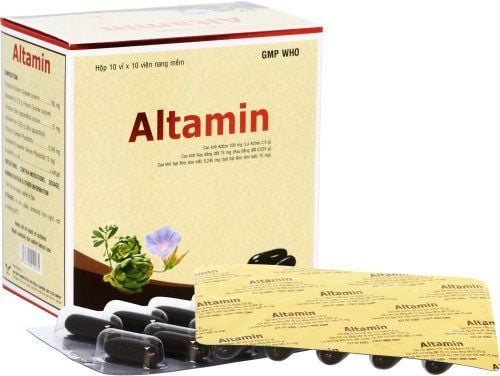This is an automatically translated article.
The article was professionally consulted with Doctor Tran Quoc Tuan - Emergency Resuscitation Doctor - Emergency Resuscitation Department - Vinmec Phu Quoc International General Hospital.Portal hypertension in cirrhosis is a common complication. Portal hypertension in cirrhosis causes gastrointestinal bleeding, which is the leading cause of death in cirrhosis if not treated promptly.
1. Overview of portal hypertension in cirrhosis
Portal hypertension in cirrhosis is a common complication. The portal veins are the veins that transport blood from organs such as the stomach, small intestine, large intestine, spleen, and pancreas to the liver. Cirrhosis is a condition in which liver tissue is damaged, causing chronic decline in liver function, thereby affecting the veins that transport blood to the liver - the portal vein, leading to portal hypertension.In children, extrahepatic portal hypertension is a congenital disease or acquired due to many causes such as peritonitis, enteritis, infection, catheterization at birth, ... Increased venous pressure Extrahepatic portal vein in young children can lead to cirrhosis if left untreated.

Tăng áp lực tĩnh mạch cửa ngoài gan của trẻ do nhiều nguyên nhân gây ra
2. Symptoms of portal hypertension in cirrhosis
Cirrhosis causes portal hypertension with the following symptoms:Vomiting blood: Due to increased portal pressure, the esophageal veins dilate and rupture, causing gastrointestinal bleeding. This is a typical symptom and is the leading cause of death if not treated promptly. Hypersplenism Cerebral hemorrhage due to thrombocytopenia Skin mucosal...
3. Treatment of portal hypertension in cirrhosis
In young children, prolonged untreated extrahepatic portal hypertension may lead to cirrhosis and an indication for liver transplantation. Because gastrointestinal bleeding will gradually decrease as the child grows older, the indication for surgery should be carefully considered. In addition, conservative treatment is affected by many other potential factors.In patients with cirrhosis, treatment of portal hypertension includes: resuscitation, anti-shock therapy, treatment to restore venous blood volume; hemostatic treatment; and prevention of recurrent gastrointestinal bleeding.

Trẻ nhỏ có thế được chỉ định cấy ghép gan khi cần thiết
Intensive resuscitation and anti-shock therapy: Treatment is aimed at stabilizing hemodynamics. Ensure hemoglobin by infusion of macromolecular solution (Dextran, Hemocel, ...), followed by 5% Glucose and blood transfusion. Cirrhotic patients should be treated to control coagulation and thrombocytopenia with fresh plasma or platelet transfusions. If blood and fluid therapy does not respond, and blood pressure does not increase, use vasopressor drugs such as Dopamine, Noradrenalin, ... Hemostatic treatment: There are 3 methods of hemostatic treatment in patients with hypertension. The portal vein in cirrhosis is endoscopic insertion of a catheter (inserted balloon) to stop bleeding, TIPS technique and self-expanding esophageal stent. In particular, the endoscopic method of inserting the balloon is only performed when the patient's hemodynamics are stable. If endoscopic therapy fails, TIPS is indicated for the treatment of recurrent gastrointestinal bleeding. This is an endovascular intervention technique, less invasive, limiting the dilation and rupture of esophageal veins, fewer complications after the intervention, portal pressure is reduced, blood is circulated well, varicose veins disappear. , no recurrence of gastrointestinal bleeding.

Nội soi đặt sonde để cầm máu trên bệnh nhân tăng áp lực tĩnh mạch cửa trong xơ gan
Currently, at Vinmec International General Hospital, a system of standard medical machines has been deployed and used for examination, imaging and treatment, including cirrhosis and other diseases of the liver. liver. All examination and treatment procedures at Vinmec are carried out methodically and according to standard procedures by a team of highly qualified medical professionals, thus providing optimal treatment results for customers.
Please dial HOTLINE for more information or register for an appointment HERE. Download MyVinmec app to make appointments faster and to manage your bookings easily.













